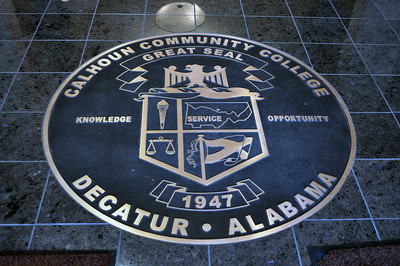JC Calhoun State Community College in Decatur, AL, (with a second campus in Huntsville) is one of about 3,500 higher education institutions in the United States that received coronavirus relief funds in the second stimulus bill authorized in December 2020. Calhoun also received stimulus funds from the first CARES Act appropriation.
The coronavirus relief bills provided funding to help higher education institutions weather the COVID-19 storm. The catch with the CARES Act was that institutions had to spend half of the allocated funds on direct aid to students. With the second stimulus package, the Coronavirus Response and Relief Supplemental Appropriation Act (CRRSAA), Congress authorized a second, larger slug of cash. Again, the recipient institutions were required to spend a portion of the funds – exactly the same amount as they had spent the first time – on direct student aid.
In Calhoun’s case, it received almost $2.2M for direct student aid in both the first and second coronavirus relief bills. Between the two bills, Calhoun’s apportionment was just over $10M. As required, Calhoun promptly spent the $2.2M allotted for direct student aid from the CARES Act. As of November 30, 2020, Calhoun had spent $0 of its institutional portion of the CARES money. I haven’t confirmed this, but I suspect Calhoun also spent the second $2.2M in direct student aid promptly.
Coronavirus relief funds reveal student focus
This week, Calhoun announced that it was giving cash “stimulus payments” of about $1,100 to each Title IV or Pell Grant student enrolled there. For students who don’t qualify for those programs, Calhoun will be providing a direct payment of $550. That includes dual-enrolled high school students.
“We are excited to do this for our students. We know many of them have suffered hardships due to the COVID-19 pandemic. The stimulus check allocations will help students recoup some of their losses during the pandemic. Students who were enrolled for the spring semester are investing in their futures and we’re excited to invest back in them.”
Dr. Joe Burke, Calhoun Interim President.
According to the Department of Education, about 47% of Calhoun’s 15,000 students receive Pell Grants.
So, a little comparison is in order here. WCC reported an enrollment of about 21,200 students. 39% of them are Pell-eligible. (That seems awfully high, since we’re in a rich community.) Between the first two stimulus payments, WCC received about $12M in “institutional” cash.
The federal government gave recipient institutions pretty broad discretion regarding how they spent their stimulus cash. So I’m not faulting any school for what it does with the money, as long as it follows the rules.
I’m just saying that one of these two institutions is focused on its students. The other doesn’t mind larding on an extra $10 per credit hour to pay for useless construction.
Photo Credit: Lwrence G. MIller , via Flickr




















